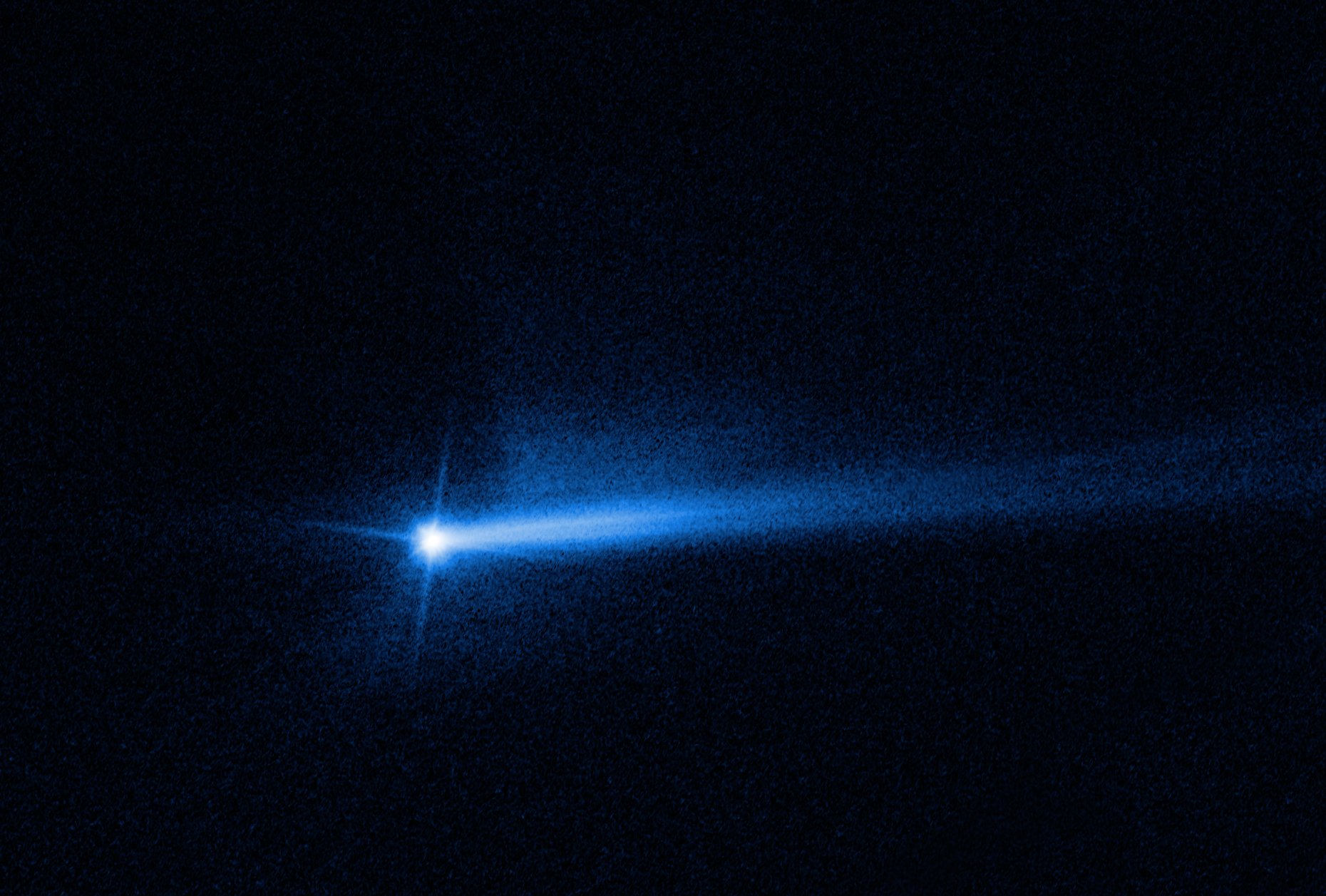New images from NASA's Hubble show surprise update on DART asteroid impact

Late last month, NASA intentionally crashed a spacecraft into an asteroid in a first-ever planetary defense test mission. New images from the agency's Hubble Space Telescope show two tails of dust ejecting from the Didymos-Dimorphos asteroid system.
Following the impact, Hubble made 18 observations of the system and the imagery indicates the second tail formed between October 2 and October 8.
"The twin tail is an unexpected development, although similar behavior is commonly seen in comets and active asteroids. The Hubble observations provide the best-quality image of the double-tail to date. The relationship between the comet-like tail and other ejecta (ejected material) features seen at various times in images from Hubble and other telescopes is still unclear and is something the Investigation Team is currently working to understand," NASA said.
In the above image, a bright blue spot at the center has 3 diffraction spikes extending from its core at the 1 o’clock, 7 o’clock, and 10 o’clock positions. Also, visible in the image are two tails of ejecta that appear as white streams of material extending out from the center at the 2 o’clock and 3 o’clock positions.
New #DARTMission image just dropped! Last month, @NASA crashed a spacecraft into a non-threatening asteroid in a test of planetary defense. This new Hubble image shows a surprising update – two tails of dust ejecting from the impacted asteroid system: https://t.co/kRZ3XAvJlE pic.twitter.com/MfUCWy2REX
— Hubble (@NASAHubble) October 20, 2022
In the coming months, scientists will closely analyse the Hubble data to determine how the second tail developed.
- READ MORE ON:
- NASA DART mission
- DART asteroid impact
- Hubble Space Telescope










